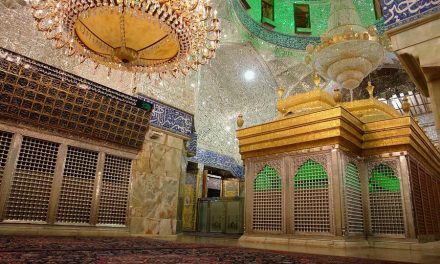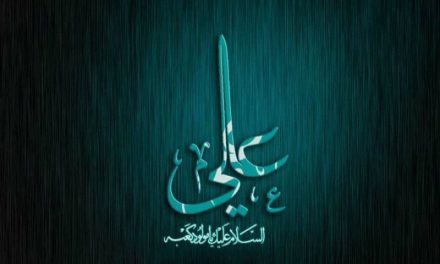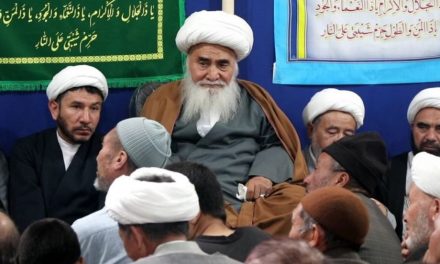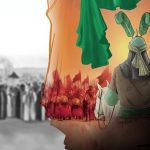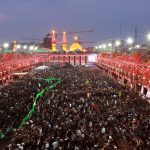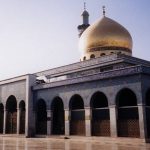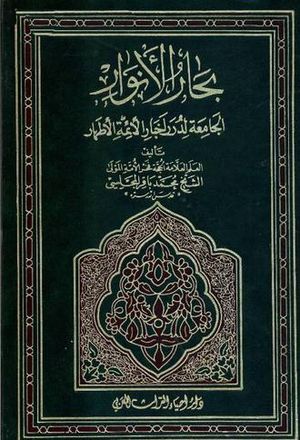
Bihar Al-Anwar, literally: Seas of lights: the collection of pearls of the reports of the pure Imams, is the most comprehensive Shia hadith collection written under supervision of al-Allama al-Majlisi. This book is also commonly called al-Bihar in brief. Writing of this book which is a collection of Shia teachings, lasted more than 30 years and a group of al-Allama al-Majlisi’s students helped him in this task.
The author has organized the book based on 25 general topics and thus in 25 volumes. However, nowadays it is published in 110 volumes. In every volume, the author has collected related subtopics in different chapters. In every chapter then, he first has mentioned verses of the Quran related with that issue together with their interpretations and then has mentioned hadiths related to that chapter.
Al-Majlisi has tried to cover all common topics and issues in Bihar al-anwar; for example, this collection begins with the book of “al-Aql wa l-jahl” (wisdom and ignorance) and continues with topics about theology, Oneness of God (tawhid), divine justice and the history of the prophets. From volume 15 to volume 53 (of the 110 volume set) is dedicated to the life and merits of the Prophet (PBUH), Lady Fatima (SA), and Shia Imams (AS).
Due to its maximum number of hadiths narrated from Shia Imams (AS), chaptering of topics, explanation of hadiths, various theological, historical, jurisprudential, exegetical, ethical, hadith, and lexical researches, Bihar al-anwar has a great position among researchers; so that regardless of its many volumes, since its first publication, many manuscript copies of that were written and with later development of printing industry, all or parts of it have been frequently printed.
Author
Muhammad Baqir b. Muhammad Taqi b. al-Maqsud Ali al-Majlisi known as al-Allama al-Majlisi or the Second Majlisi (b. 1037/1627 – d. 1110/1698) and one of the most famous scholars in jurisprudence and hadith in the world of Islam. He was among the nobilities of Shia at the time of Safavids. He was an expert in different Islamic sciences such as exegesis, hadith, jurisprudence, usul, history, rijal, diraya, philosophy, logic, mathematics, literature, lexicon, geography, medicine, astronomy, and occult sciences.
Goal
In the introduction of Bihar al-anwar, al-Majlisi explained his goal of writing the book as,
“The reason for writing this book is that I was enthusiastic in learning different types of knowledge, and after spending a part of my life on learning different sciences and thinking about the fruits and goals of these sciences I found that knowledge is achieved only through the revelation and the hadiths of the Ahl al-Bayt (AS) and in the hereafter, only this type of knowledge is helpful. Therefore, I studied the narrations and hadiths of the Infallibles (AS).
He also tried to collect those references which were about to be lost and thus referred to those books which were abandoned due to excessive attention to the Four Books, the corrupt intentions, lack of attention of the ignorant and the enemies of the Ahl al-Bayt (AS).
He also said that, “No book like this has ever been written and no one has superseded me in this and I hope this book will be the reference of scholars and seekers of knowledge for all those who seek the knowledge of Imams (AS) until the rise of the Upriser of the Ahl al-Bayt.”
Manner of Writing
The author decided to write this book after 1070/1660, after he wrote Fihris musannafat al-ashab and the first date mentioned in Bihar al-anwar is 1072/1662. He finished its draft in 1104/1693 or 1106/1695; however, the clean draft was still being worked on by his students after al-Majlisi passed away.
To write this book, al-Majlisi sent many of his students to different cities and countries to find available hadith books and manuscripts. For example, he reported that even to acquire Ibn Babawayh’s Madinat al-ilm which people thought existed in Yemen, he sent a group with many gifts to the ruler of Yemen to get that book.
During the writing of Bihar al-anwar, some students of al-Majlisi including Mirza Abd Allah Afandi, Mir Muhammad Salih Khatunabadi, Mulla Abd Allah b. Nur al-din al-Bahrayni, al-Sayyid Ni’mat Allah al-Jazairi and Amina Khatun, sister of al-Allama al-Majlisi, helped him.
Al-Majlisi could well manage all the works needed, so he only sent his students to collect and write verses of the Quran and hadiths under the titles he organized. The rest of selections from text and writing the final draft was done by Allama himself. However, the whole book was finished by his students after he passed away.
Al-Majlisi chose titles for the front cover of every book and organized titles in every book. He began every chapter with verses of the glorious Qur’an which were either directly related or through different historical, hadith and exegetical evidences they were related with the title; then he brought quotations from different exegetes (usually Amin al-Islam al-Tabrisi and Fakhr al-Din al-Razi) and then he mentioned hadiths related with any title together with their references. He sometimes narrated a part of a hadith and brought it in full elsewhere more appropriate (he sometimes mentioned where he had brought the hadith in full) and also, if necessary, he explained the meaning of hadiths. His explanations are not found in the volumes copied by his students.
Although al-Majlisi benefited from the assistance of some scholars, financial help of Safavid government, and different privileges and facilities for gathering sources for the process of writing Bihar al-anwar, according to available manuscripts and other evidences, he-after achieving scientific degrees and writing most of his books-did the main job himself.
Source: al-shia.org

